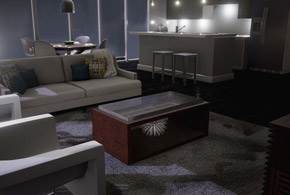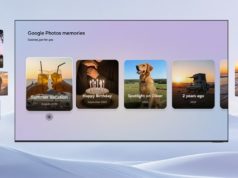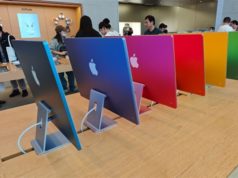Even when the buildings are not yet built, prospective buyers can “see” detailed floor and furniture layouts using virtual reality with a 2D floor plan, thanks to Trick 3D’s Floorplan Revolution services.
LAS VEGAS—For high-end real estate developers with dreams of dramatic properties with cutting-edge designs, it can sometimes be difficult to communicate what a property is to become by showing off flashy artist renderings or printed floor plans on paper alone.
To help solve that problem, virtual reality technology is being incorporated with paper-based 2D floor plans of high-end properties to enable prospective buyers to virtually “see” what a luxury apartment or condo will look like even before the first steel girder or brick is erected.
Here at the CTIA Super Mobility 2016 conference, vendor Trick 3D was showing off its Floorplan Revolution cloud-based real estate visualization services, which were launched in March after some eight years of development and refinement. Part of the delay in bringing the product out was due to the real estate slowdown, particularly involving high-end properties, since the 2008 recession, Chad Eikhoff, the founder and creative director of the virtual studio company, told eWEEK.
Floorplan Revolution allows prospective buyers to essentially tour a property that has been created using VR based on the 2D floor plans envisioned by developers, said Eikhoff. The VR images can be viewed using any device, including a smartphone, a tablet, a laptop or a desktop computer, or can be viewed in more detail using a VR headset and a custom app for the HTC Hive, Samsung Gear VR or Google Cardboard viewers. Customers can view the properties in either 3D furnished or unfurnished forms, and can switch between them with a click. Viewers can also see daytime and nighttime views of properties so they can see them in a variety of conditions.
“Everybody who builds a space wants to lease it first,” before it is ever built, said Eikhoff. “That’s a pretty big market.”
Trick 3D is currently developing an upcoming version of the Floorplan Revolution VR service that will be aimed at providing 3D virtualized views of commercial properties, including office space, retail space and more. It is in beta testing now, with the first beta version expected to be released later this year and a full version early next year. The commercial version will visualize properties that are built or that are being planned.
“Our growth road map is to add capabilities where furniture retailers and other companies will be able to stage and sell their products” by having them appear in the virtualizations, said Eikhoff. “It’s reaching the buyer at the best point for a retailer,” when a buyer has a property in mind and now wants options to furnish and appoint it, he said. “We’re solving visualization problems in the design phase.”
To use Floorplan Revolution, developers can upload their 2D floor plans to the Floorplan Revolution website, select home features and design options, and can receive ready-to-use links to virtual show homes in about 48 hours, according to Trick 3D.
Trick 3D enables virtual worlds and programming for a variety of clients, including Delta Air Lines, Aflac, AT&T, CBS and the Turner Broadcasting System.
Competitors in the real estate visualization marketplace include Matterport, which uses special 3D cameras to scan existing properties and create virtual images for prospective buyers.







